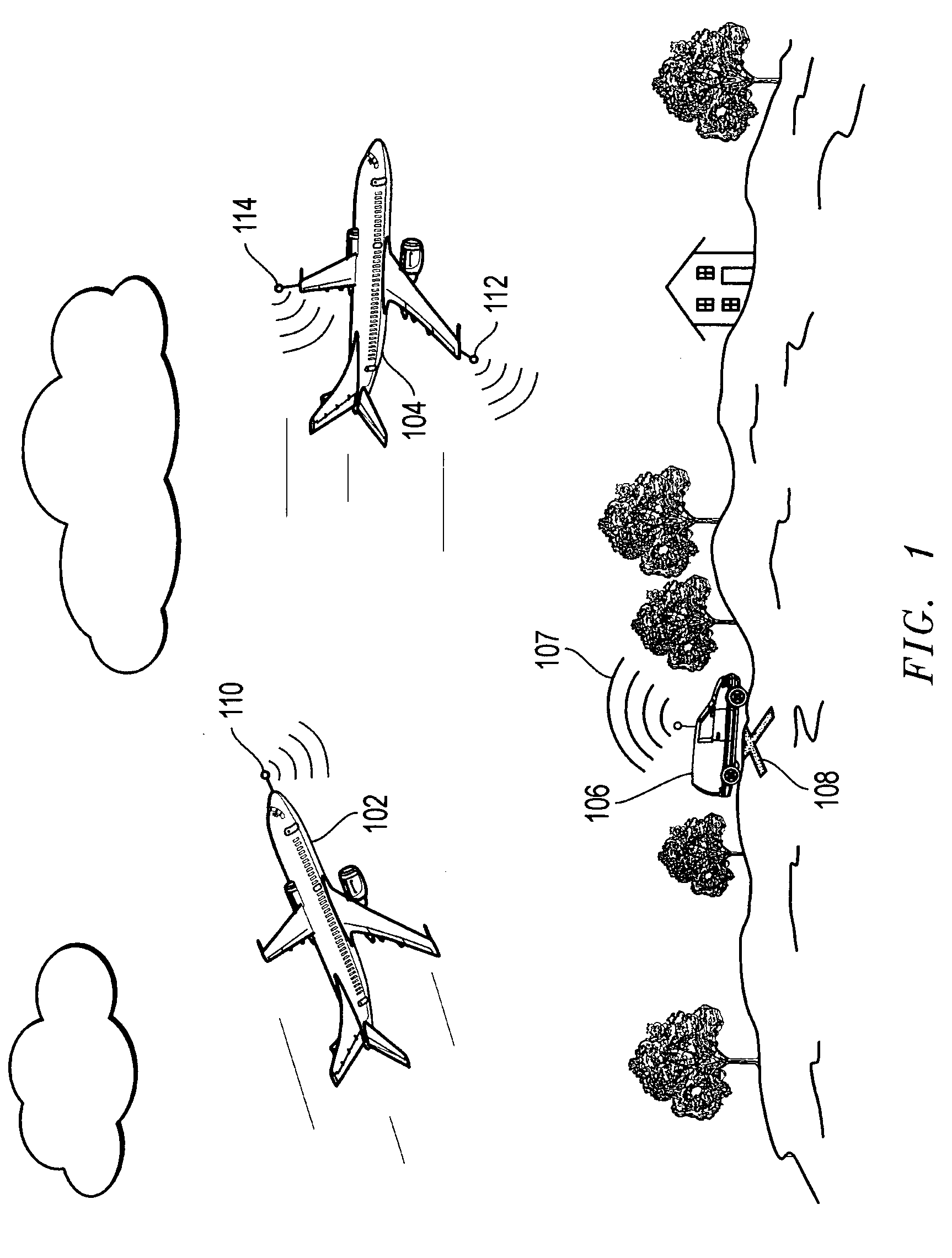Systems and methods for TDOA/FDOA location
a technology of tdoa/fdoa and location method, which is applied in the direction of direction finders, instruments, measurement devices, etc., can solve the problems of increasing operation costs and complexity, not being able to reposition the two aircraft for subsequent tdoa/fdoa measurements, and requiring additional costs and complexity associated with the line of bearing equipment, so as to reduce operational complexity and cost
- Summary
- Abstract
- Description
- Claims
- Application Information
AI Technical Summary
Benefits of technology
Problems solved by technology
Method used
Image
Examples
Embodiment Construction
[0021]FIG. 1 is a simplified illustration of one embodiment of the disclosed systems and methods as it may be implemented to determine the geo-location of an electromagnetic radiation emitter in the form of an earth-based RF emitter 106. In the illustrated embodiment, RF emitter 106 is shown transmitting a RF signal 107 in a relatively short burst (e.g., RF transmission time of less than or equal to about two seconds) from a given geo-location 108 marked by a “X” in FIG. 1. In the illustrated embodiment, earth-based RF emitter 106 is shown as a single mobile emitter that may be stationary or moving at the time of transmission of the RF signal. However, it is also possible RF emitter may be a stationary (e.g., permanently positioned) emitter, and / or that multiple RF emitters may be present.
[0022] The disclosed systems and methods may be employed to locate any type of mobile or stationary device that is suitable for emitting electromagnetic radiation having a signal strength that is ...
PUM
 Login to View More
Login to View More Abstract
Description
Claims
Application Information
 Login to View More
Login to View More - R&D
- Intellectual Property
- Life Sciences
- Materials
- Tech Scout
- Unparalleled Data Quality
- Higher Quality Content
- 60% Fewer Hallucinations
Browse by: Latest US Patents, China's latest patents, Technical Efficacy Thesaurus, Application Domain, Technology Topic, Popular Technical Reports.
© 2025 PatSnap. All rights reserved.Legal|Privacy policy|Modern Slavery Act Transparency Statement|Sitemap|About US| Contact US: help@patsnap.com



